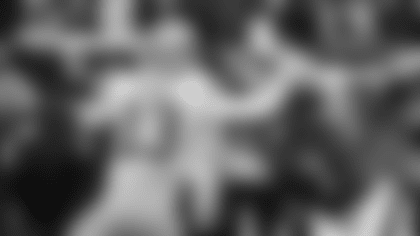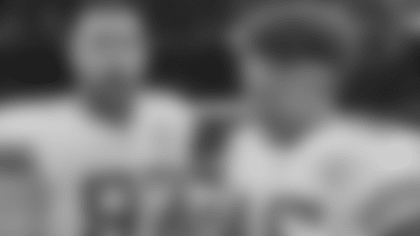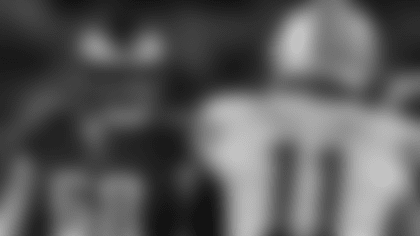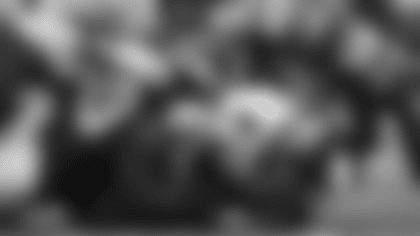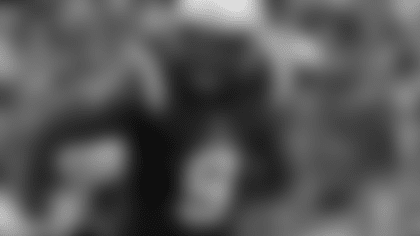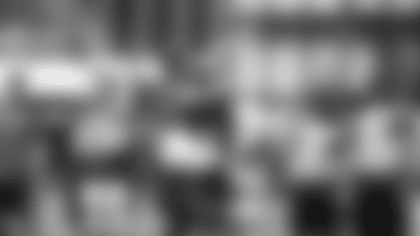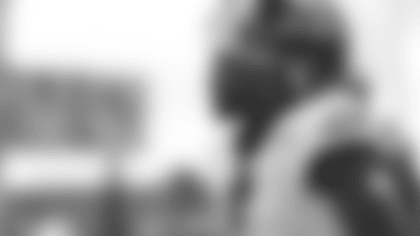The San Francisco 49ers' offense is operating at an extremely high level right now, and one could easily argue that it's the best group Head Coach Kyle Shanahan has worked with in his career (which includes two trips to the Super Bowl).
The 49ers lead the league in expected points added (EPA) per play, are second in yards per play, and third in points per game. Their pass offense is at or near the top of the league in most statistical categories, and the run game has been very efficient as well. But for all the numbers that we can dive into, what stands out most on the film is the versatility of this offense.
Remember, true versatility is not just the ability to line up in funky formations or throw out wonky trick plays that get people in space. Versatility means that you can put five eligible receivers on the field, and a defense has no idea what kind of formation you're going to line up in or what kind of play you're going to call. There are no tells with this offense when the players break the huddle. As a defense, the 49ers give you a lot to think about.
San Francisco's top personnel grouping is 21 personnel, meaning 2 backs and 1 tight end. The two backs are All-Pro Christian McCaffrey and fullback Kyle Juszczyk, with the tight end being George Kittle. That leaves room for two receivers on the field in Brandon Aiyuk and Deebo Samuel.
The 49ers run this grouping out onto the field 37.2 percent of the time, the second-highest rate in the league. When those five players are out there together, it is, by far, the most productive package in football. That was the case last year after the team acquired McCaffrey, and they hit the ground running this fall. Run game. Pass game. It does not matter. They can line up in a bunch of different ways and attack every level of the field.
As you can see in those examples above, the 49ers can line up with the same players on the field and attack you in all of the same core ways that Shanahan offenses have traditionally attacked. Historically, he has been one of the best at putting defenders in conflict in the middle of the field with backfield action, motion, and misdirection to create space for his playmakers to work. Only now, Shanahan executes this with true position versatility. "Positionless Football" is a term that has been thrown around a lot in the NFL in recent years, but no team exemplifies that better than this version of the 49ers' offense (Quick note: Every play in this article actually comes out of 21 personnel).
Most defenses are able to get cues from an offense based on who is on the field. In between plays, while the offense is in the huddle, defensive players in the back seven can go through their mental Rolodex from film study and think, "When they're in this personnel, they like to line up THIS way and run THESE plays." With San Francisco, that is much, much harder. This is why the offense does not hurry up at all. They rank last in the NFL in no-huddle percentage this year. The benefits teams get from not huddling are already accounted for because of their multiplicity on offense.
When the offense breaks the huddle and approaches the line of scrimmage, the defensive communication begins. Defenders are processing what they see and they're talking things out. However, this is when another test begins because the 49ers are not a static offense. They run pre-snap motion on an astounding 80.6 percent of their plays, which ranks second in the NFL.
Not only do the 49ers run motion at an exceptionally high rate, but they're also VERY effective at it, especially in the run game. The 49ers have gained 5,304 yards on the ground when they use motion, which is 848 (!!!) yards more than the second-place team in the league, the Baltimore Ravens.
That said, they're also really good with motion in the pass game as well, using it to manipulate second-level defenders to create voids in coverage for receivers to run into. According to Next Gen Stats, 46.4 percent of Brock Purdy's passes are thrown to "open" (defined as at least 3 yards of separation), which ranks fifth amongst qualifying starting quarterbacks in the NFL. Even deeper than that, 22.6 percent are considered "wide open" (at least 5 yards of separation), which ranks 10th. When paired with their formational diversity, their use of motion helps create wide-open lanes for these receivers to work.
The first two plays in the video above are a great example of a simple motion from the backfield that helps to create a void in the middle of the field. It was the same route from Aiyuk and the same pre-snap motion, but with two different players. I threw in the extra clip with Samuel out of the backfield to further show the things defenders have to worry about. Samuel scored a touchdown on a basic run play against the Seattle Seahawks on Thanksgiving, but when he's in the backfield next to Purdy, you have to worry about him as a receiver as well (just as you would with McCaffrey, who runs routes like a receiver when he's lined up in the slot or out wide).
All of these personnel and schematic advantages create a favorable ecosystem for a quarterback to produce, which is why there's such a layered discussion when it comes to evaluating Purdy in a vacuum. That said, I don't think there's any question that he has operated this scheme at a higher rate than anyone else that Shanahan has coached in San Francisco.
Six different quarterbacks have dropped back 100 times for Shanahan with the 49ers. That list includes Purdy, Jimmy Garoppolo, Nick Mullens, C.J. Beathard, Brian Hoyer, and Trey Lance. Of that group, Purdy has the highest adjusted completion percentage (which removes drops, spikes, and throwaways) at 76.1 percent, according to Pro Football Focus. He also has the highest yards per attempt (8.6) and quarterback rating (105.1), along with the second-highest average depth of target (8.4) of those players during their time in the system.
That last number is what stands out most to me, and I think it's not the only differentiating factor between Purdy and other quarterbacks who have played in this system before or who are playing in other versions of it now. He's an aggressive quarterback who is willing to push the ball down the field.
Purdy's willingness to attack the vertical part of the field is what gives this offense an extra dimension. He's a tough quarterback who is willing to hold onto the ball in the pocket and deliver down the field. I cited those "open receiver" numbers from Next Gen Stats earlier, but there's another set of stats that help describe Purdy's play style.
PFF has two metrics that, while they certainly can be scrutinized because of the gray area they live in, help tell the story of his execution of the offense. The first is big-time throw percentage, where Purdy ranks third in the NFL amongst starting quarterbacks, tied with Jalen Hurts in this category. That's impressive. But you also pair that with his turnover-worthy play percentage, where he ranks in the bottom five in the NFL amongst qualifying starting quarterbacks. Purdy is the only passer in football with those credentials. I think it paints a fair picture of his performance so far this season.
Most of Purdy's throws come to receivers who are essentially schemed open within the structure of that offense. However, on the throws that aren't, he is VERY willing to make tight-window throws. He will test the limits of defenders in 1-on-1 situations. He will attack the vertical part of the field and the area between the numbers consistently until you prove, as a defense, that you're able to take the ball away. Can the Eagles answer the bell? That will be a big storyline to follow in this game.
Purdy is also more elusive than his counterparts in this system. PFF has a stat that measures how many of your pressures turn into sacks. Patrick Mahomes ranks first in that category at just 8.6 percent. Josh Allen ranks second at 9.4. The Eagles have seen both of those guys in the last two games. Purdy ranks sixth amongst starting quarterbacks in that stat, at 15.2 percent. He will drop back, escape the rush, and push the ball down the field. It will be important for the rush to get home in this game AND finish for sacks in the backfield, just as it was in the last two games against Mahomes and Allen.
The 49ers have, statistically, the best offense in football for a reason, and they will be a big challenge for the Eagles. I can't wait to break this game down on Monday morning.



